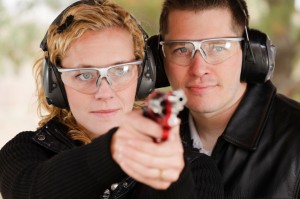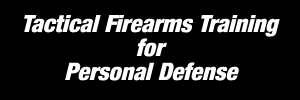Would it surprise you to know that the fastest growing segment of the shooting sports industry is the ladies’ market? Industry statistics show that to be the case.
When we talk about the shooting sports market, we are referring to rifle, shotgun, and handgun sports. These can include hunting, plinking, games like trap, skeet, and sporting clays, three-gun competition, IDPA, IPSC, and other defense-based competitive activities.
The area of the shooting sports that generates the most interest among women is the use of handguns, and the use of handguns for personal defense is the number one area of interest. So, let’s discuss some considerations involving personal defense with a handgun.
First, having a concealed handgun license (CHL) is important. The classes teach the legal aspects of where the handgun can be carried, and more importantly, where it cannot be carried.
In recent years, it has become legal in Texas to carry a handgun in a vehicle without a CHL if certain qualifications are met. Because of this, I often hear the comment, “I don’t need a CHL because I can carry it in my vehicle”. Inside your vehicle is probably the safest place you can be. It is outside the vehicle that the need for personal protection is greatest.
If you cannot take the gun with you and your car is burglarized, your gun may get in the wrong hands. Also, should your car break down and you get a ride or have the car towed, you have two options, both of which are undesirable and even illegal. In the case of a breakdown or accident, one choice is to leave the gun in the car when it is being towed.
In this case, you have no control over the gun and are liable for what might happen with the gun. The other option is to take the gun
with you. In that case, you are illegally carrying the firearm because you are not in your vehicle and you do not have a CHL.
Let’s talk about what the CHL is not. The CHL licensing process is NOT training to use your handgun in a defensive situation. In fact, CHL classes are not designed to be handgun training. The shooting proficiency portion of the licensing process is simply to see if the student can load the gun and make it shoot in a very controlled situation. Again, this has nothing to do with a person’s ability to deploy his or her gun rapidly and shoot effectively in an emergency self-defense situation.
The absolute best way to become proficient in using your handgun in a defensive encounter is to seek professional training. Professional training does not include your Uncle Floyd, who is a “gun guy” but has never had any professional training. Going to the pasture shooting a few rounds, casually changing magazines by pulling one out and laying it on the tailgate and replacing it, is not defensive training.
Defensive handgun training from any competent instructor will include instruction in safety considerations, proper grip and stance, ready positions, press-checking the firearm, speed reloads and tactical reloads, malfunction clearance techniques, and rapid deployment of the gun with effective shot placement. More advanced training will include shooting from various kneeling and prone positions, moving and shooting, proper methods of shooting from cover, the difference in cover and concealment, tactical light use, and other techniques that would enable a victim to survive a potential deadly encounter.
Another important consideration for ladies is how to carry the handgun. Various types of holsters are available including inside the
waistband in various positions and ankle holsters. Purses designed for handguns are available, and there are techniques to be learned for
drawing the handgun properly from purses.
Carrying a handgun loosely in a purse is not a good idea. Pockets can be used with an effective pocket holster, or fanny packs can be used. Ladies with fanny packs don’t seem to get as much of the “that person has a gun” reaction as guys do if they wear a fanny pack. The same holds true with vests and over-shirts in the summer.
Also, if you are going to carry in a car, there are several options available. Some are good, and some are not so good.
First, the gun should be accessible, but concealed. If you carry in a purse, then it can be placed nearby. A bag that doesn’t look “gunny” is a good place to carry. A camera bag is an option, because it doesn’t look like a gun bag. If you carry in a holster, the gun can remain in the holster if it is accessible and comfortable when seated in the car.
The glove box is not a good place to carry the gun. Most glove boxes are across the car and the gun is not readily accessible. Consoles work if there is a place for the gun and it does not get mixed up with the other clutter in the console.
Carrying the gun loosely under a leg (yes, that has been done) is a really awful way to carry a gun. In that location, it may be observed during a traffic stop. If you are involved in a wreck or are the recipient of some road rage ramming or anything of that nature, the gun will be flying out of control in the car.
Door pockets are not recommended for carry. If the gun is inside something to be concealed in a door pocket, it can be difficult to deploy in an emergency.
Ladies entering the shooting sports world are a welcome and valuable asset. If you are a CHL holder, or are considering becoming a CHL holder, please consider becoming as competent as possible.
A common thread among CHL instructors is telling their students to practice, but the question is “practice what?” Standing at three, seven, or fifteen yards and shooting slowly at a stationary target does not prepare you for a deadly force encounter.
If you have had some training beyond the CHL class, you will know what to practice and where you need work. You will have more fun on the range, and your confidence level will be greatly enhanced.
Published in the Llano News Hunters’ Guide – October 2013

